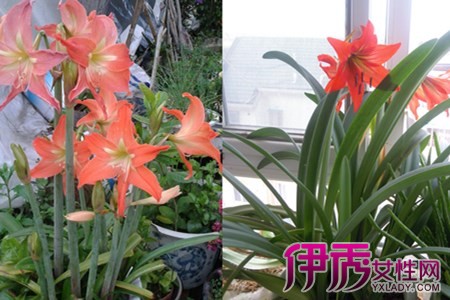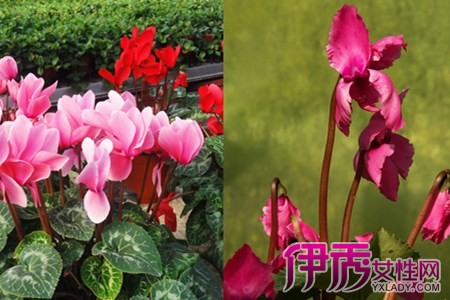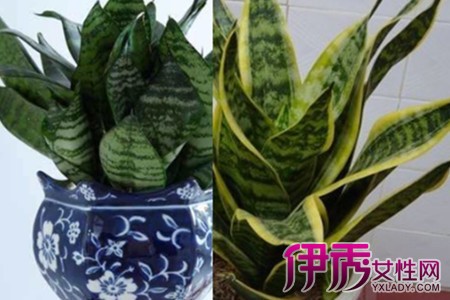Is Zhu Dinghong poisonous? does it bother people to understand the planting notes and precautions of this plant?

Putting strange flowers and plants in the bedroom has become a habit of many people who pursue the quality of life. Green plants do give people a great visual enjoyment and ornamental value, but the knowledge of planting plants should also understand the characteristics of these plants and whether they contain toxins. Anthurium andraeanum and its beautiful and elegant shape have won the favorite of many flower growers. In addition to Anthurium andraeanum, Zhu Dinghong, which is full of flowers, has also become the most common indoor plant.
Zhu Dinghong belongs to the family Amaryllidaceae. The captivity of this plant contains mild toxins. When growing this plant at home, you must be careful not to eat its bulbs by mistake, otherwise it will cause toxic reactions. If there is a child at home who is planting this plant, it should be placed in a place that is out of reach of the taller child.
Although this plant still has a slight toxin, it is a beautiful plant that is very suitable for family cultivation. When planting this kind of plant, you must be careful not to touch its juice, which contains toxins. Wash your hands immediately after touching it carelessly.
Plants have certain requirements for the environment and soil. Although Zhu Dinghong is a very common indoor plant, its planting skills are relatively simple. When planting this kind of plant, you should also know its living habits. This plant likes warm and humid weather and can be placed on the balcony when planted indoors. after being exposed to the sun, the flower will bloom more brilliantly.
This kind of plant generally uses the method of artificial ball to propagate. In the ball catching method of reproduction, it is necessary to strictly follow the matters needing attention during reproduction, and take careful care of it. When cutting balls for reproduction, it must be properly watered and fertilized. In addition, an adequate supply of sunlight should be guaranteed.
How to deal with Zhu Dinghong after flowering to understand the planting instructions of this plant
Zhu Dinghong is famous for Huawei Orchid and Baizi Lotus. It is mainly distributed in Brazil and Hainan province of Chinese mainland. After artificial cultivation techniques, the reproduction of Zhu Dinghong is very good. Beautiful flowers give people a pleasant feeling, and so is this kind of flower. Compared with the delicate and lovely miniature flowers, this kind of flower is very large when it is in full bloom. It blossoms every year in April and blooms again in winter.
Most of the propagation methods of Zhu Dinghong are sowing reproduction, ball distribution, propagation and cutting propagation. When the red flowers in Zhuding are in full bloom, the seeds can be produced by clipping and pollinating the flowers. When the red flowers are in full bloom, it must be noted that if there are no seeds, the residual flowers should be cut off when the flowers are in full bloom, which is more conducive to the growth of this plant. If the residual flowers are not cut off as soon as possible, the residual flowers will continue to absorb nutrients, which is very disadvantageous to her growth.
Many people will pollinate the flowers when they are in full bloom, carry out artificial pollination, and then grow seeds. The pollination of this flower is simple, just touch the pollen on the pistil with a cotton swab. After pollination, the safflower must be carefully cultivated, and the seeds will mature after the flowers bloom and fall. The mature seeds will be collected and sown in the coming year.
Zhu Ding safflower likes the warm climate, but does not like the hot climate, so the temperature must be strictly controlled when planting, which is more conducive to its growth. Many people like to plant this kind of plant at home, and they should also know the cultivation taboos and matters needing attention when planting plants, which is more conducive to its growth and reproduction.
With the growth of Zhu Dinghong, its rhizome will become thicker and thicker. When planting, we must pay attention to changing the pot and soil for it regularly. It is more conducive to its growth after changing into a larger flowerpot. As long as the nutritious growth of Zhu Dinghong is very rapid, its branches and leaves will grow luxuriantly when it grows too fast. Therefore, we must prune the branches and leaves of this plant regularly, and fertilize it regularly, which is more conducive to its growth.
Is Zhu Dinghong toxic? culture methods and matters needing attention of Zhu Dinghong
Zhu Dinghong, also known as Zhu Dinglan, is the head of good luck, rich and honorable, meaning festive and auspicious. More adorable, is Zhu Dinghong poisonous? Next, let's talk about Zhu Dinghong's breeding methods and matters needing attention.
A brief introduction to Zhu Dinghong
Zhu Dinghong, also known as Guting flower, hundred lotus, trumpet flower, column top red, Hua Yu orchid, Gu Ting flower, opposite lotus and so on. Any of various perennial bulbous herbs of the genus Amaryllidaceae. Bulb subglobose, 7 cm in diam., with stoloniferous branches. Leaves 7, extracted after anthesis, bright green, band-shaped, about 29 cm long, base width about 2 cm. Flowering stem hollow, slightly flattened, ca. 38 cm high and 2 cm wide, with powdery; flowers 3; involucral bracts lanceolate, ca. 3 cm. Pedicel slender, ca. 3.5 cm long. Perianth tube green, cylindric, ca. 2 cm long, perianth lobes oblong, apical tip, ca. 12 cm long, ca. 5 cm wide, magenta, greenish, throat with small scales. Stamens 6, ca. 8 cm long, filaments red, anthers linear-oblong, ca. 6 mm long, ca. 3 mm wide. Ovary ca. 1.5 cm, style ca. 10 cm, stigma 3-lobed.
Zhu Dinghong is native to Peru and Brazil, and is now distributed in America, Asia, Europe and Africa. Flowering summer flowers are shaped like trumpets, flowering from late winter to spring, sometimes extended to early summer. The capsule is globose, the fruit is mature in autumn. Modern cultivated varieties are mainly hybrid large flower species, with white, light red, rose red, orange red, bright red, with a variety of stripes, flower diameter of more than 25cm.
Is Zhu Dinghong poisonous?
Because some plants have toxicity that is unacceptable to people, there are many people who love Zhu Dinghong, and friends who want to breed them will have the question of whether they are poisonous, because they are mainly afraid of causing danger by carelessness. or children don't pay attention to cause danger. In fact, we do not need to worry, our Zhu Dinghong is non-toxic, but the bulbs of Zhu Dinghong have certain acoustics because they contain substances such as lycopine, and the leaves and flowers of Zhu Dinghong do not have direct toxic substances. Therefore, friends who want to breed Zhu Dinghong can rest assured to breed them.
Third, the culture method of Zhu Dinghong
1. Soil: the planting soil of Zhu Dinghong requires loose and fertile sandy loam, and the pH is 5.5-6.5. do not accumulate water. The basin soil can be mixed with 2 parts of mature stable fertilizer soil, 6 parts of rotten leaf soil and 2 parts of sandy soil.
2. Watering: Zhu Dinghong needs to keep the plant moist and water thoroughly. But avoid too much water, poor drainage. General indoor air humidity is OK.
3, sunshine: Zhu Dinghong likes the sun, can have the right amount of direct sunlight, not for too long. It should be placed in front of a window with bright light, good ventilation and no bright light.
4. Temperature: Zhu Dinghong likes warmth and is not resistant to cold. Summer should be cool, the temperature should be 18-22 ℃, winter dormancy requires a cold and dry environment, the temperature should not be lower than 5 ℃.
5. Fertilization: Zhu Dinghong likes fertilizer and begins to apply topdressing when the leaves grow to 5-6 cm long. generally, rotten cake fertilizer is applied every half a month, and once every 20 days after anthesis, to make the bulb enlarge and produce new bulbs.
6. Insect pests: in order to make Zhu Dinghong grow vigorously and blossom as soon as possible, disease and pest control should be carried out. Anthers should be sprayed once a month, and anthers should be sprayed around 9: 00 a.m. and 4: 00 p.m. on a sunny day, but should not be sprayed in the hot sun at noon to prevent drug damage.
7. Pruning: Zhu Dinghong grows fast and its leaves are long and dense. when changing pots and soil, the fallen leaves, withered roots, diseases and insect pests should be cut off, leaving exuberant leaves.
IV. Matters needing attention in the breeding of Zhu Dinghong
What needs to be paid special attention to in culture is temperature and light. Zhu Dinghong is not cold-resistant and does not like high temperature, so we should pay attention to the observation of temperature changes in culture. The temperature should not be less than 5 degrees Celsius. Maintain humidity but pay attention to avoid direct sunlight, otherwise it will harm the plants.
When Zhu Dinghong is dormant, it should be noted that watering should be strictly controlled, that is, there is water to keep it from withering; close air temperature, generally there is no resistance when plants are dormant, so it is necessary to keep the indoor temperature between 10 degrees Celsius at this time; for newborn bulbs, they can be buried in the sand. Zhu Dinghong's dormancy can end around January, when the flowers can be watered thoroughly to awaken dormancy.
The common cultivated varieties of Zhu Dinghong are Red Lion, Hercules, Lilona, Flower Crown, Soviliqin, Goddess of Wisdom and so on. Most of the flowers are crimson or orange. The cultivation of Zhu Dinghong needs to pay close attention to temperature and light, because these two have an important impact on its growth.
More information
- Prev

A detailed explanation of the planting techniques of cyclamen seeds for how long to mature
Cyclamen is also known as radish and begonia rabbit flower, this kind of flower belongs to a series of primroses. This kind of plant is also the city flower of Qingzhou City, Shandong Province. Cyclamen flowers are extraordinarily beautiful when they are in bloom, and this kind of flower is very suitable for indoor planting.
- Next

Learn the culture method of tiger skin orchid to let domestic flowers thrive.
Tiger skin orchid is a common domestic flower, although it does not blossom, but it is good for air quality. So it is still loved by many people, but some people are always unable to raise tiger Pilan. Today, we will help you interpret the method of tiger Pilan culture.
Related
- Fuxing push coffee new agricultural production and marketing class: lack of small-scale processing plants
- Jujube rice field leisure farm deep ploughing Yilan for five years to create a space for organic food and play
- Nongyu Farm-A trial of organic papaya for brave women with advanced technology
- Four points for attention in the prevention and control of diseases and insect pests of edible fungi
- How to add nutrient solution to Edible Fungi
- Is there any good way to control edible fungus mites?
- Open Inoculation Technology of Edible Fungi
- Is there any clever way to use fertilizer for edible fungus in winter?
- What agents are used to kill the pathogens of edible fungi in the mushroom shed?
- Rapid drying of Edible Fungi

